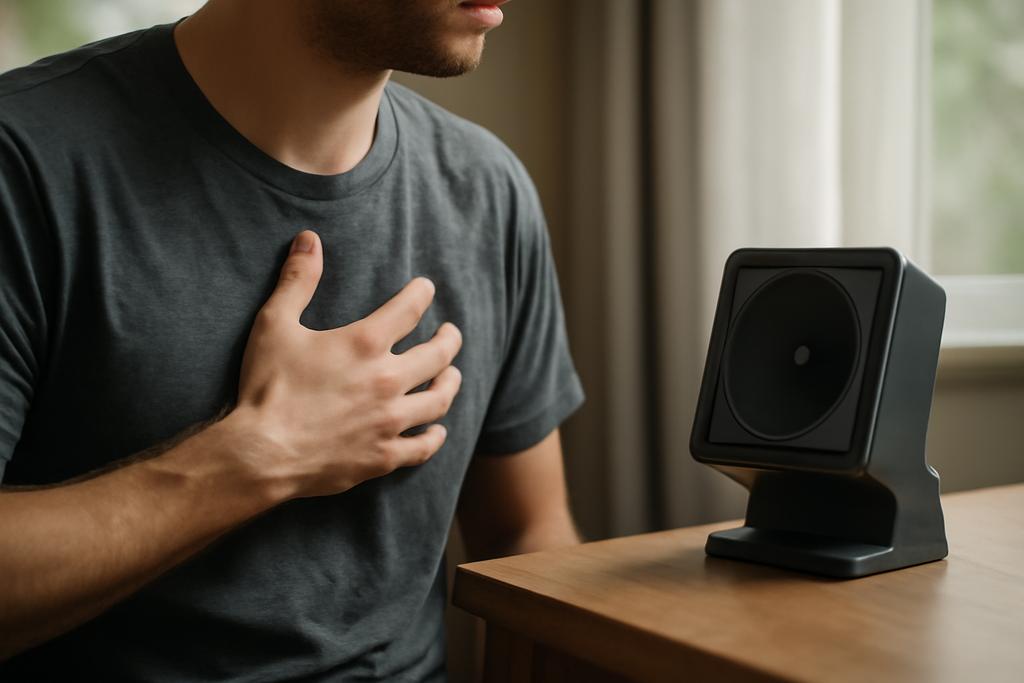Listening to the Heart Without Touching It
What if your heart could be monitored without a single electrode stuck to your skin or a smartwatch strapped to your wrist? Researchers at Xi’an Jiaotong-Liverpool University and their collaborators have been exploring a fascinating frontier: using radar waves to eavesdrop on the subtle vibrations of your heartbeat from a distance. This isn’t science fiction—it’s the cutting edge of contactless cardiac monitoring, a technology that could revolutionize healthcare, smart homes, and even driver safety.
Traditional heart monitoring relies on physical contact—electrodes, patches, or wearables that can be uncomfortable, intrusive, or even impossible for some patients. Radar-based monitoring promises a future where your heart’s rhythm is tracked unobtrusively, through walls or from across the room, without compromising privacy or comfort.
Radar’s Secret Language: Decoding Heartbeats in a Sea of Noise
Radar systems send out radio waves that bounce off objects and return with information about their position and movement. When aimed at a human chest, these waves pick up tiny vibrations caused by the beating heart and breathing lungs. But the challenge is immense: the radar signal is a complex cocktail of heartbeats, breathing, random body movements, and environmental noise. Extracting the heartbeat from this noisy mix is like trying to hear a whisper in a crowded café.
The team led by Yuanyuan Zhang and Rui Yang has taken a deep dive into the algorithms that make sense of these radar signals. Their work, a comprehensive review published by researchers at Xi’an Jiaotong-Liverpool University and partners, maps out the landscape of signal processing techniques that turn raw radar echoes into meaningful cardiac data.
From Fourier to Neural Networks: The Arsenal of Algorithms
The journey from radar signal to heartbeat involves several steps. Early methods relied on classic signal processing tools like the Fast Fourier Transform (FFT), which breaks down signals into their frequency components. These spectrum-based methods are straightforward and efficient but struggle when the heart rate varies suddenly or when noise overlaps the heartbeat frequencies.
To tackle these challenges, researchers have developed periodicity-based methods that look for repeating patterns in the signal, using templates or probabilistic models to identify individual heartbeats. These methods can segment heartbeats more precisely but often require prior knowledge or calibration for each person.
Blind source separation techniques, borrowed from audio processing, attempt to untangle the mixed radar signals into independent components—separating the heartbeat from breathing and movement noise. While powerful, these methods demand careful tuning and can sometimes over- or under-decompose the signals.
Enter deep learning—the rising star in this field. Neural networks, especially convolutional and long short-term memory (LSTM) models, can learn complex, nonlinear relationships in data, reconstructing fine-grained cardiac features like electrocardiogram (ECG) waveforms from radar signals. Deep learning models can also adapt to noise and body movement better than traditional algorithms, but they require large, diverse datasets and significant computational resources.
Datasets: The Fuel for AI’s Heartbeat Detectives
One of the hurdles in advancing radar-based cardiac monitoring is the scarcity of public datasets that pair radar signals with ground-truth cardiac measurements. The researchers highlight several valuable datasets collected under different conditions—from quiet, seated adults to children and people in motion. These datasets are crucial for training and benchmarking algorithms, especially deep learning models that crave vast amounts of data.
However, collecting such datasets is complex and resource-intensive, involving synchronized radar and medical-grade cardiac sensors. The authors encourage the community to produce more high-quality, diverse datasets to accelerate progress.
Challenges on the Horizon: Movement, Environment, and Real-World Complexity
Despite impressive advances, radar-based cardiac monitoring faces significant obstacles before it can become a household or clinical staple. Body movement remains the biggest nemesis—vigorous or unpredictable motion can drown out the heartbeat signal. While some deep learning models show promise in handling movement, they are not yet universally reliable.
Complex electromagnetic environments, such as inside cars or crowded rooms with multiple devices, introduce interference that can confuse radar sensors. Long-range monitoring is another challenge, as signals weaken and background noise grows with distance. Additionally, the orientation of the radar relative to the body and the stability of the radar platform itself affect signal quality.
Detecting abrupt changes in heart rate variability, which are critical for diagnosing cardiac conditions, is still difficult with current algorithms. Most methods assume relatively stable heart rhythms and struggle with the irregularities seen in patients with heart disease.
Looking Forward: A Symphony of Algorithms and Technologies
The future of radar-based cardiac monitoring lies in combining the strengths of various approaches. Hybrid models that integrate signal processing with deep learning, enhanced by attention mechanisms and spatiotemporal analysis, could unlock new levels of accuracy and robustness.
Data augmentation techniques to simulate abnormal heart rhythms, transfer learning from related cardiac datasets, and improved evaluation metrics that preserve clinically relevant features will further refine these systems.
On the hardware side, advances in radar design, antenna arrays, and programmable wireless environments promise to boost signal quality before algorithms even begin their work.
Why It Matters
This research is more than an academic exercise; it’s a blueprint for a future where health monitoring is seamless, non-invasive, and integrated into everyday life. Imagine smart homes that silently watch over elderly relatives, cars that detect driver fatigue through subtle heart rate changes, or emergency responders locating survivors by their heartbeat through rubble—all enabled by radar and sophisticated algorithms.
By charting the current state and future directions of cardiac feature extraction from radar signals, the team at Xi’an Jiaotong-Liverpool University and their collaborators provide a vital guidepost for researchers and engineers striving to make this vision a reality.
In a world increasingly defined by invisible waves and intelligent machines, the heartbeat—our most intimate rhythm—may soon be heard without a touch, thanks to the quiet hum of radar.










